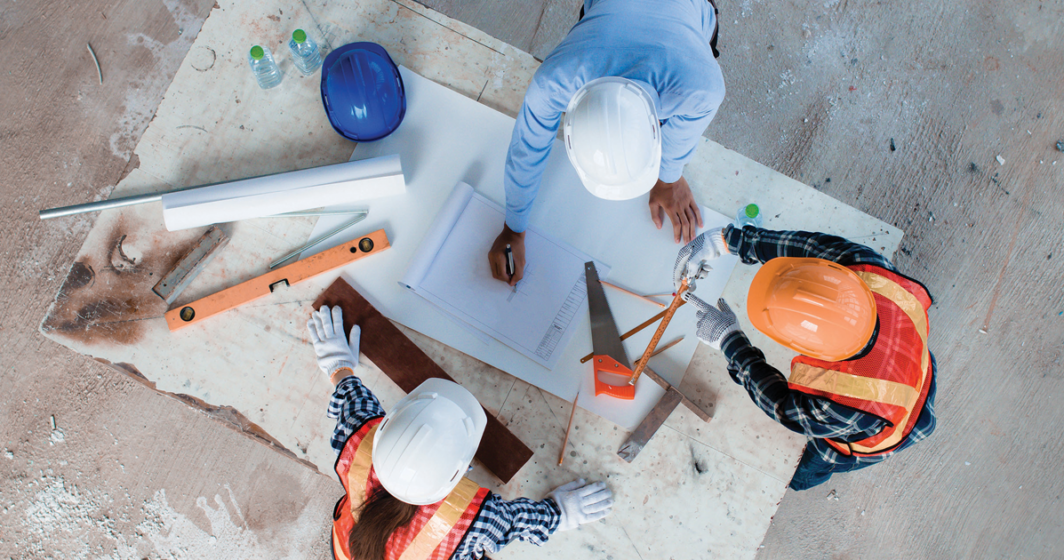The resilience of the plumbing industry shone through in 2020 and it will rebound to become even stronger. Kathryn Kernohan reports.
All corners of the world have shared the significant challenges and interruptions brought about by last year’s catastrophic COVID pandemic and the ongoing climate change crisis. These issues are having an unprecedented impact on both the plumbing and broader construction industries.
A recent report by global consultancy management firm McKinsey and Company explores an expected radical shift in the construction industry, comprising real estate, infrastructure and industrial structures.

As the report outlines, the global construction industry had already been undergoing transformation, but that industry leaders broadly agree that these changes will be accelerated due to the impact of COVID-19.
In the past couple of decades, the construction industry has been “plagued by dismal performance” and profitability is low, according to the report.
“As challenging as 2020 has been for plumbing and broader construction industry, the silver lining of this crisis is that we now have an opportunity to reshape to ensure we are more agile, effective and resilient moving forward,” says Master Plumbers CEO Peter Daly.
“We know that here in Australia, there has been subdued revenue growth in plumbing for the five years following the GFC. COVID-19 has clearly had, and will continue to have, a detrimental impact on the productivity and profitability of many businesses, but it has also led to Government investments into a range of infrastructure projects as well as incentives for people building and renovating homes. This increases the pipeline of opportunities for our sector and will hopefully provide the confidence for businesses to invest in a skilled, more stable workforce and better preparedness for digital innovations in the sector.”
McKinsey and Company’s report forecasts direct responses to the pandemic such as an increase of remote working practices.
It identifies a range of market characteristics as the catalyst for change, including a scarcity of skilled labour, cost pressures from infrastructure and affordable housing and stricter regulations around work-site sustainability and safety, all of which are issues applicable to Australia as well as other countries.
The issue of affordable housing is one that has direct correlations to COVID-19, with McKinsey and Company analysis finding that every third global urban household cannot afford a decent place to live at market rates and that these challenges have been exacerbated by the pandemic.
The report also finds that skilled labour shortages have become a major issue in several markets, and that close to half (41 per cent) of the current construction workforce in the US is expected to retire by 2031.
This is reflected closer to home, where a significant skills shortage in the plumbing industry has been identified by the Federal Government’s Department of Education, Skills and Employment.
A recent snapshot by the Australian Bureau of Statistics covering the period of March to July 2020, spanning the first round of COVID-19 restrictions, found that approximately 81,700 workers had been lost to the building and construction industries during that time. More than 50,000 of these were in Victoria and New South Wales.
McKinsey and Company outline nine shifts that will fundamentally change the construction industry.
This includes greater specialisation within the industry, with the prediction that companies will refine their services to focus on areas such as luxury housing, multi-storey residential buildings or hospitals.
Another expected shift is an additional focus on branding, allowing smaller businesses to attract and retain customers and showcase their value, service quality and reliability. Increased investment in technology and human resources are among the other areas highlighted.
The report predicts that globally, construction activity could be back to pre-pandemic levels by the first half of 2021, but that it may not occur until 2024 or even later.
IBISWorld’s recent Plumbing Services in Australia report predicted that there will be reduced demand for plumbing services throughout 2021 but an expected increased demand in the non-residential construction sector moving forward.
McKinsey and Company’s fundamental observation that the current crisis will lead to new opportunities moving forward resonates with Peter Daly.
“We know that the plumbing industry will not only survive this crisis but also rebound strongly. Research and analysis, like this report, shows us that businesses and traders which adapt to the changing nature of the industry have every opportunity to thrive as we navigate the ‘new normal’.”
Plumbing – by the numbers
27,300 The number of plumbing businesses in Australia*
65,300 The number of people employed in the plumbing industry
18,185 The number of apprentices employed in the construction trade, including plumbers*
$17.5bn Current revenue generated by the plumbing industry*
$86.2bn The estimated total cost of current and proposed infrastructure projects across Australia**
*IBIS **Infrastructure Australia
Share this Article






